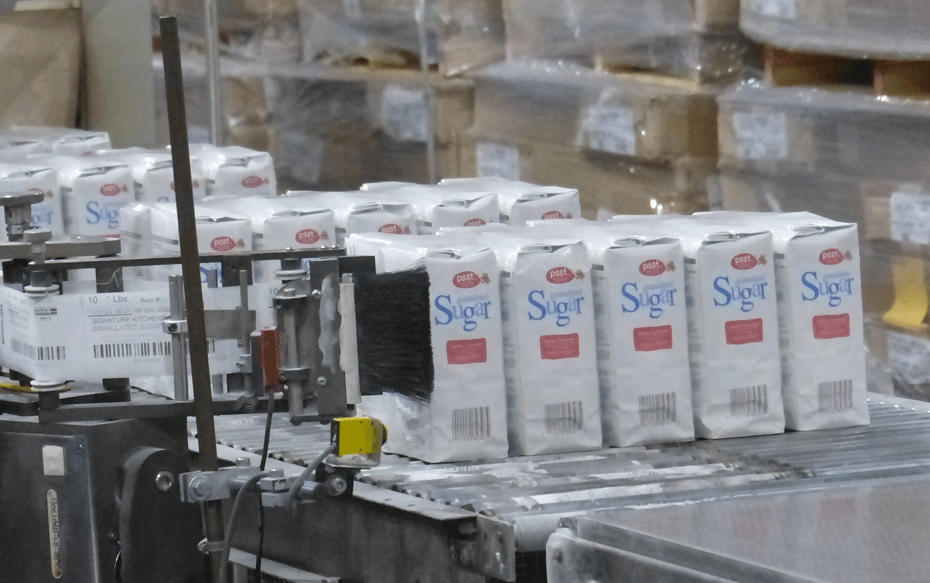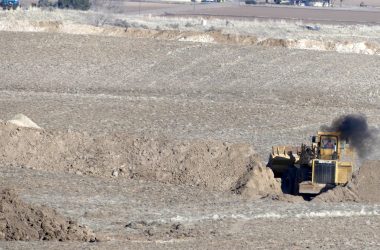VALE – Farmers can plan carefully, plant at the right time and methodically nurse a crop but in the end the weather always has a vote regarding final harvest results.
The results from this year’s sugar beet harvest appear to be trending toward an average mark, as a cold, wet and windy spring – combined with hot temperatures over the summer – impacted final yields and sugar content.
“Although final numbers won’t be firm for another eight to 10 days, it is safe to say we will fall short of our 39 tons/acre estimate and be closer to 38 tons/acre,” said Brodie Griffin, vice president of agriculture for the Amalgamated Sugar Company in Nampa.
Griffin said sugar content has “leveled off” to about 18 percent. “We expect little change with the tons remaining,” he said.
The profit in sugar beets derives from the sugar content, or sucrose percentage. For Amalgamated, the five-year average sugar content goal is 17.92%, said Jessica Anderson, company spokesman.
The local harvest typically kicks off in October. Farmers drive a machine called a defoliator into local beet fields. The defoliator cuts – or “crowns” – the top of the beet. Then a beet harvester enters the field and glides along the side of the beet rows and lifts them out of the soil.
The planting season begins in March or early April.
Griffin said last week about 20 acres remained to be harvested in the Nyssa region.
“Our sugar is off a little bit. I think tonnage is down company wide,” said Paul Skeen, a local onion and sugar beet producer.
A long period of windy weather in the spring impacted many beet producers and compelled some to replant.
“The weather just has so much to do with it,” said area farmer Bruce Corn.
Corn said his operation did not have to replant and that this year’s slightly reduced yields and sugar content are actually going against the five-year trend.
“But in any given year you can have exceptionally good yields or be off like this year. That’s the nature of farming,” said Corn.
Stuart Reitz, Malheur County extension agent, said summer weather played the key role in final harvest results.
“It didn’t get super-hot but it was consistently hot weather. The heat stunts the plants,” said Reitz.
Reitz said while the local area always encounters 100-degree weather in the summer, this year “we had more 100-degree days in the summer, more than twice as many.”
Since 2015, Reitz said, temperatures on average climbed.
“Every year has been above the 30-year average. You talk to people and 30 years ago, we got a lot more snow than we have lately. We are not getting the same type of winter precipitation we had in the good ol’ days, if, in fact, they were good ol’ days,” said Reitz.
Reitz said changes in the weather pattern may have long-term impacts on all crops, not just sugar beets.
“I am convinced we are in a changing climate. Not everyone necessarily agrees with me on that,” said Reitz. If weather conditions during planting season and the harvest continue to warm, Reitz said producers will have to adapt “somehow or another.”
“If breeders come up with more heat-tolerant varieties that is good. If they don’t, that’s a problem,” said Reitz.
Reitz said adaptation has already occurred in some areas of the globe regarding the climate and crops.
“Like some of the historical grape-growing regions have shifted and so some things they grew in like cooler areas of Germany, some of the white wines, have shifted and now they grow red grapes because they simply do better,” said Reitz. The sugar beet crop produces between $18 to $20 million in profit each year, said Reitz.
The growing season also wasn’t as long as needed for some farmers, said Corn.
“Clear days and cool nights. That is conducive to sugar and a long growing season,” said Corn.
Sugar beet yields are “still respectable,” said Corn, producing an “average, OK year.”
The variables of farming – weather, timing and the agriculture practices of each producer – converge every year, said Corn.
“You can use the same farming techniques and the newest varieties and still your results can be mixed. Any given year you can have outliers on the down side and the upside,” he said.
News tip? Contact Pat Caldwell at [email protected].
EXCELLENCE IN JOURNALISM – Available for $7.50 a month. Subscribe to the digital service of the Enterprise and get the very best in local journalism. We report with care, attention to accuracy, and an unwavering devotion to fairness. Get the kind of news you’ve been looking for – day in and day out from the Enterprise.




